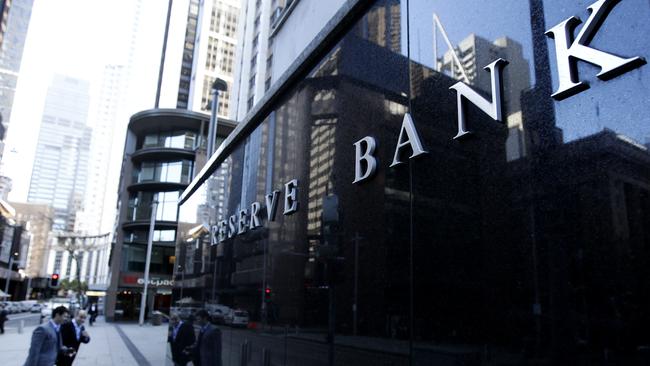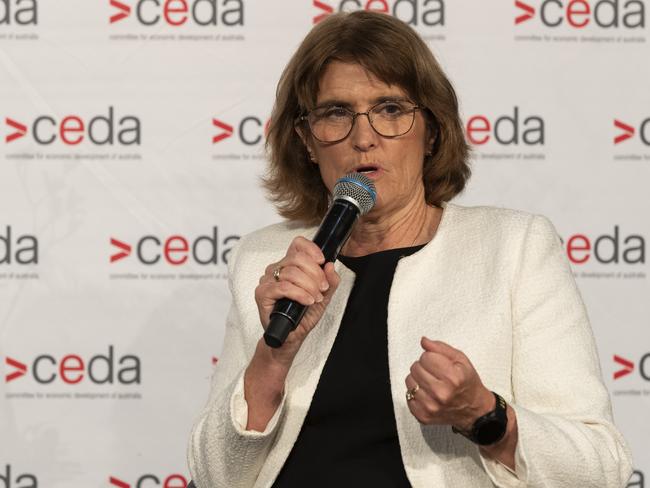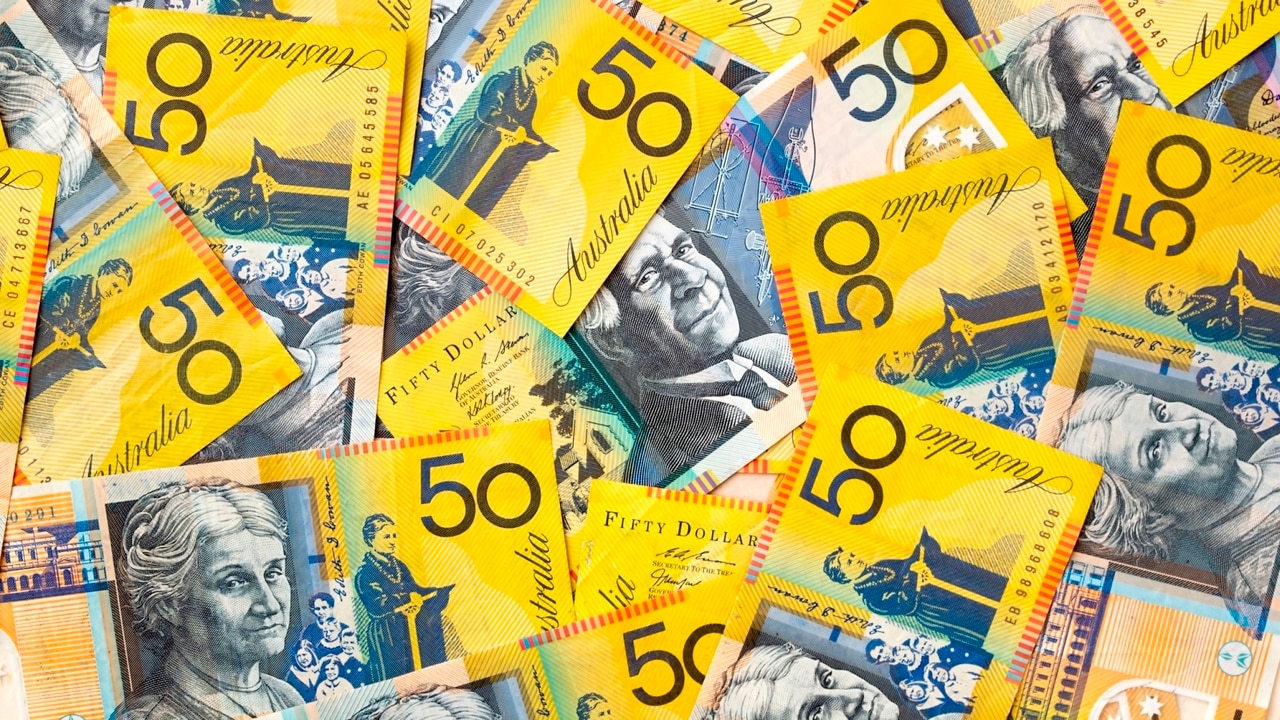RBA tipped to keep rates on hold but acknowledge weaker than expected economy
The Reserve Bank is widely expected to keep interest rates on hold after next week’s board meeting, but should acknowledge that the Australian economy is weaker than expected.

Business
Don't miss out on the headlines from Business. Followed categories will be added to My News.
The Reserve Bank is widely expected to keep interest rates on hold after next week’s board meeting but should acknowledge that the economy was weaker than expected in the September quarter.
Financial markets expect the Reserve Bank to start cutting rates in April – a month sooner than previously expected – after the nation’s annual economic growth slowed to 0.8 per cent for the September quarter, the weakest non-pandemic reading since the recession of the early 1990s.
Expectations of rate cuts coming slightly sooner shaved about 10 basis points off Australian commonwealth government bond yields and the Australian dollar hit a four-month low of US64.00c. The S&P/ASX 200 share index hit a record high of 8514.5 but lost momentum ahead of US non-farm payrolls data at the end of the week.

The consensus among economists shifted from November to February in recent months and more recently moved to the June quarter, after underlying inflation proved sticky, jobs growth proved resilient and the RBA continued to utter its “high-for-longer” mantra on interest rates.
In recent weeks, all of the big four banks apart from CBA shifted the timing of the first RBA rate cut in their forecasts from February to May. Westpac and ANZ shifted after the minutes of the RBA’s November board meeting said its members would need to see “more than one good quarterly inflation outcome to be confident that such a decline in inflation was sustainable”.
“The past six weeks have brought more evidence of this sticky inflation challenge,” HSBC Australia chief economist, Paul Bloxham said. “Trimmed mean core inflation is still at 3.5 per cent year–on-year. The jobs market is showing more signs of no longer loosening further.
“The national accounts also showed that labour productivity is falling, supporting growth in unit labour costs of 4.3 per cent year-on-year in the September quarter, which is still too high to be consistent with the RBA’s inflation target. That said, GDP growth was lower than expected, so despite a weak supply side, growth in demand also continues to be weak as well.”
Since late 2023, Mr Bloxham has been of the view that rate cuts were unlikely in 2024.
Just after the May budget, as fiscal policy pivoted to being more expansionary, he shifted his view that cuts would not be likely until well into 2025, with the June quarter being his central case.
In recent months, Mr Bloxham has warned that rate cuts could take even longer to get here, if they arrive at all.
He says the key challenge is that core inflation is still well above the RBA’s 2-3 per cent target band and falling only slowly. Part of this is by design, as the RBA tightened by less than many other central banks with the aim of prioritising keeping the unemployment rate low.
But another part of the story is that fiscal policy has been expansionary at a time when core inflation is still too high. A third element is that productivity has been very weak, constraining the supply side of the economy and supporting core inflation.
“We still see rate cuts as some time away,” Mr Bloxham said.
He expects a “shallow easing phase” to start in the June quarter of 2025, with the cash rate expected to be at 3.85 per cent by the end of 2025 and 3.60 per cent by early 2026.
Mr Bloxham sees a 25 per cent chance that interest rates won’t be cut at all in 2025.
According to CBA’s head of Australian economics, Gareth Aird, the RBA board’s post-decision statement is likely to reiterate that the board is “not ruling anything in or out”.

“But we are approaching the point at which the RBA could and should remove this line as another rate rise is increasingly unlikely; the economic data is evolving in the direction that means the next move in rates will be down,” Mr Aird said.
In his view the September quarter national accounts were a little softer than the RBA anticipated.
“The RBA expected to see another contraction in the economy on a per capita basis in the September quarter but GDP growth was softer than the RBA anticipated,” he said.
“The data confirmed that the income boost provided by the Stage 3 tax cuts did not generate a commensurate spending response by the household sector.”
Weakness on the consumer spending front puts downward pressure on growth in consumer prices.
The RBA forecast real GDP growth of 1.5 per cent on-year in the December quarter. But the economy now needs to grow by an improbable 0.8 per cent on-quarter for the RBA’s forecast to come to fruition.
“That forecast looks too strong following the September quarter outcome,” Mr Aird said.
“As a result the RBA is likely to be aware that its end-year forecast for GDP growth is now unlikely to be achieved.”
And while the unemployment rate held steady in October at 4.1 per cent, recent wages data has been lower than the RBA forecast in its most recent Statement on Monetary Policy in November.
Meanwhile, October’s monthly CPI indicator showed core inflation was tracking a little lower than the RBA’s expectations.
“The 0.8 per cent on-quarter lift in the WPI in the September quarter was softer than the RBA had expected,” he added. “On a six-month annualised rate wages growth is about 3.2 per cent, very much consistent with returning inflation sustainably to the RBA’s 2 3 per cent inflation target.
“Notwithstanding, we suspect the board will hold its neutral policy bias next week ahead of the November labour force survey on 12th December,” Mr Aird said.
More Coverage
Originally published as RBA tipped to keep rates on hold but acknowledge weaker than expected economy




